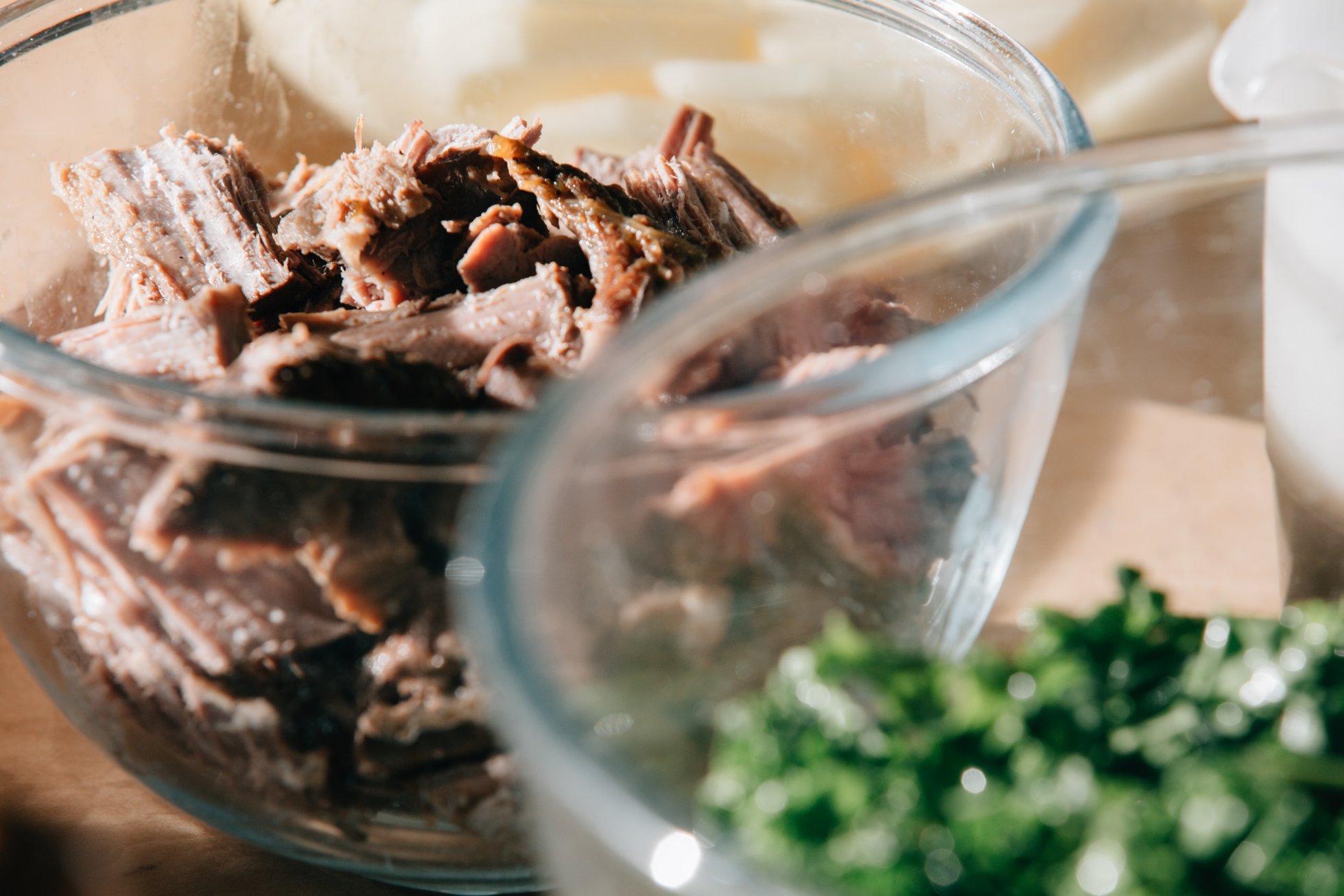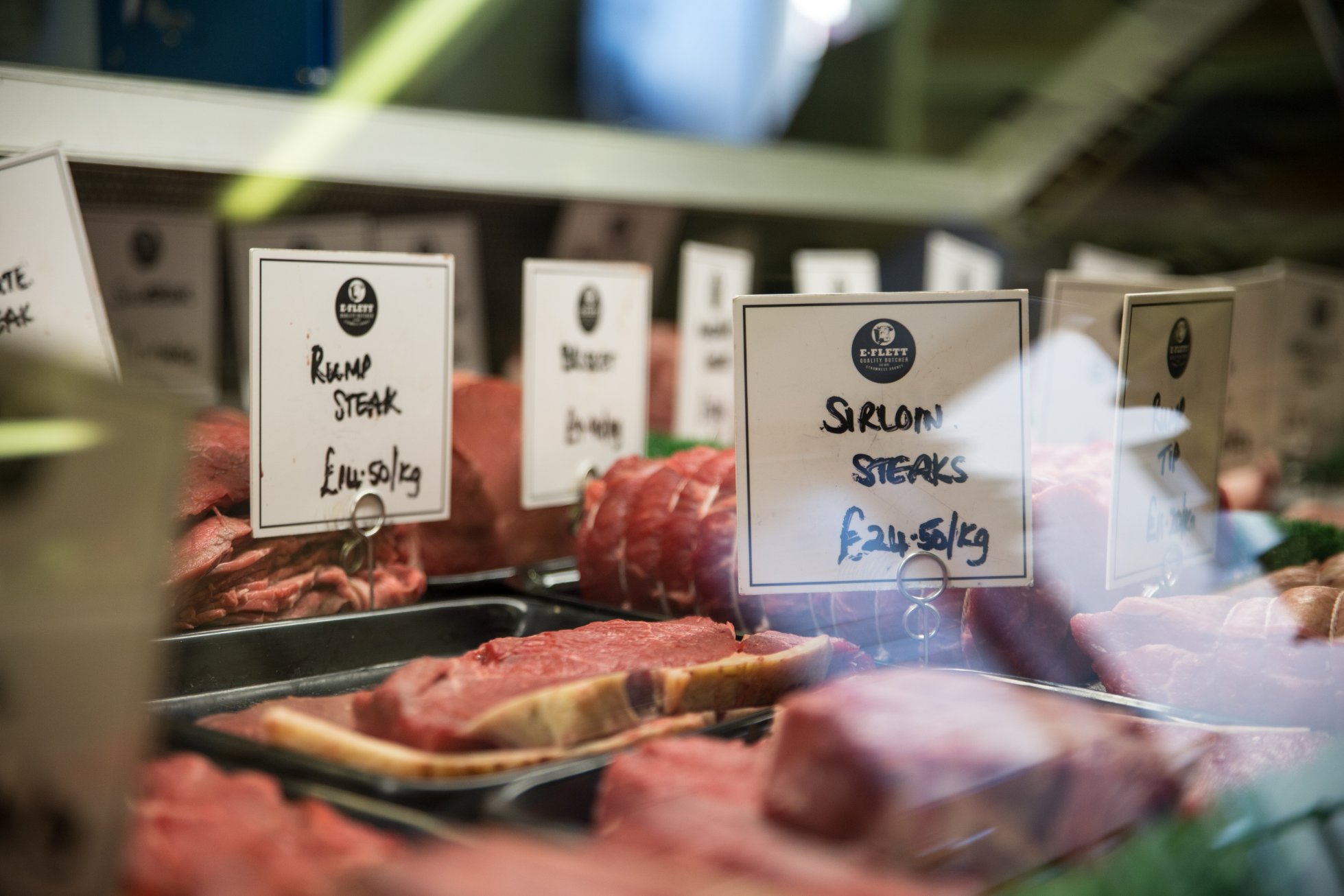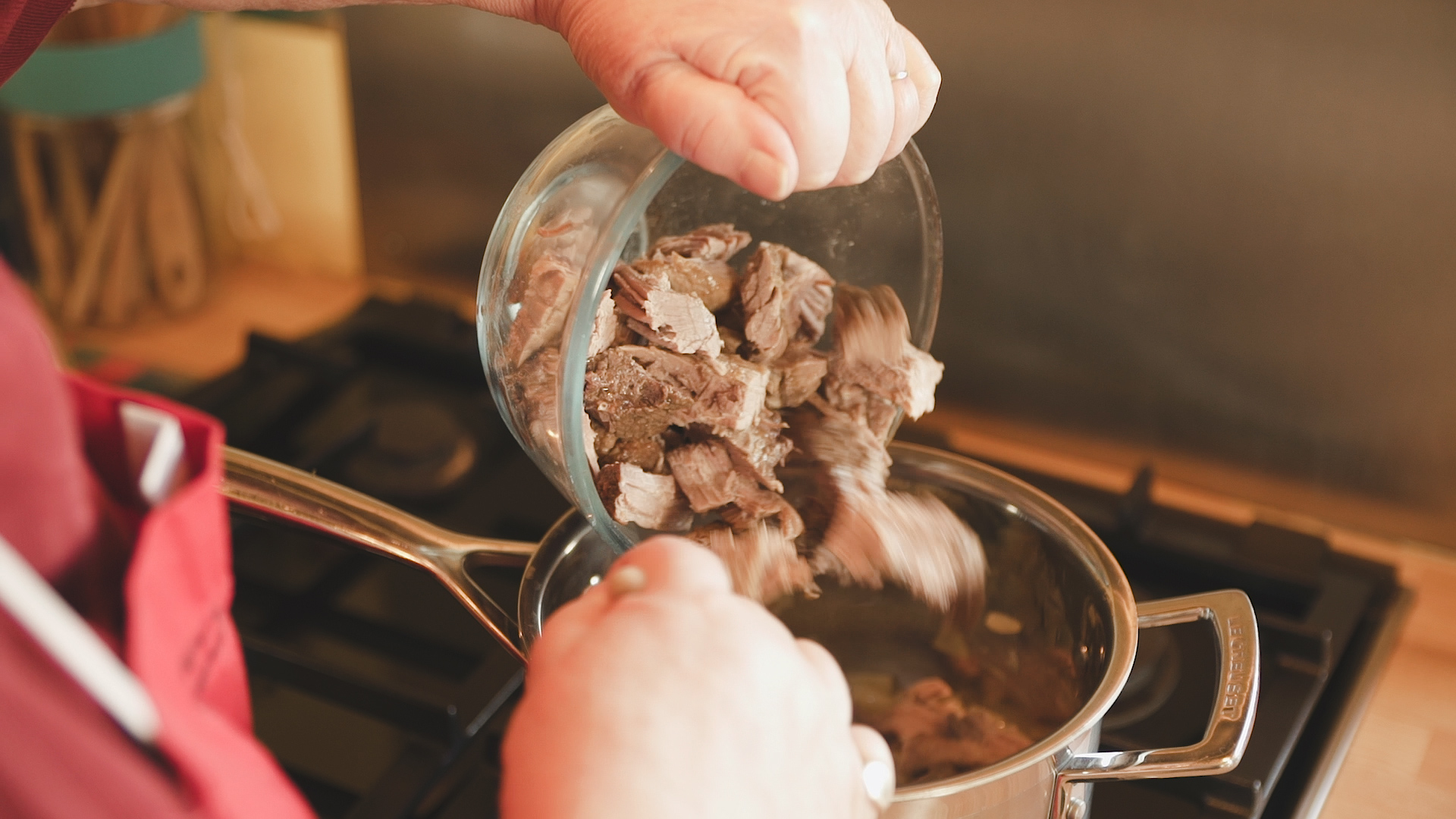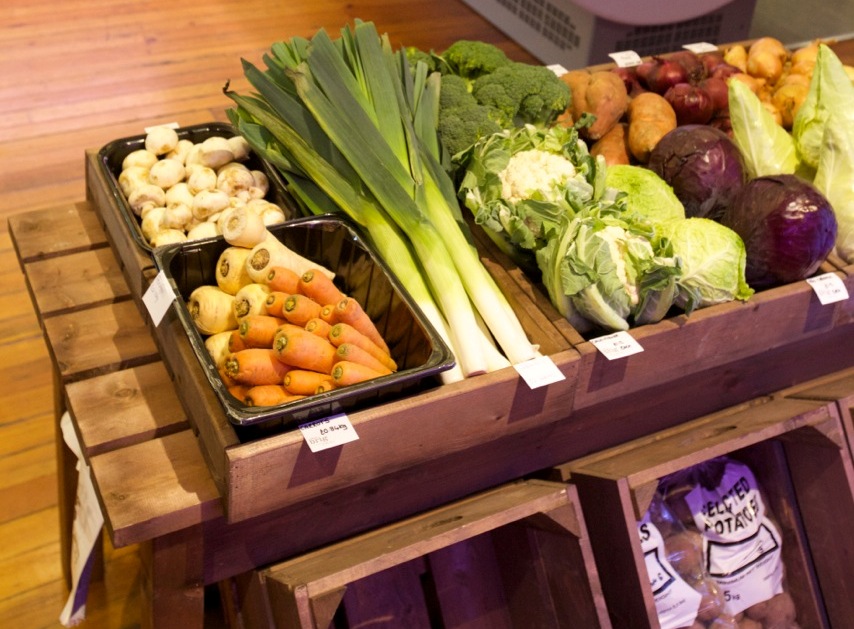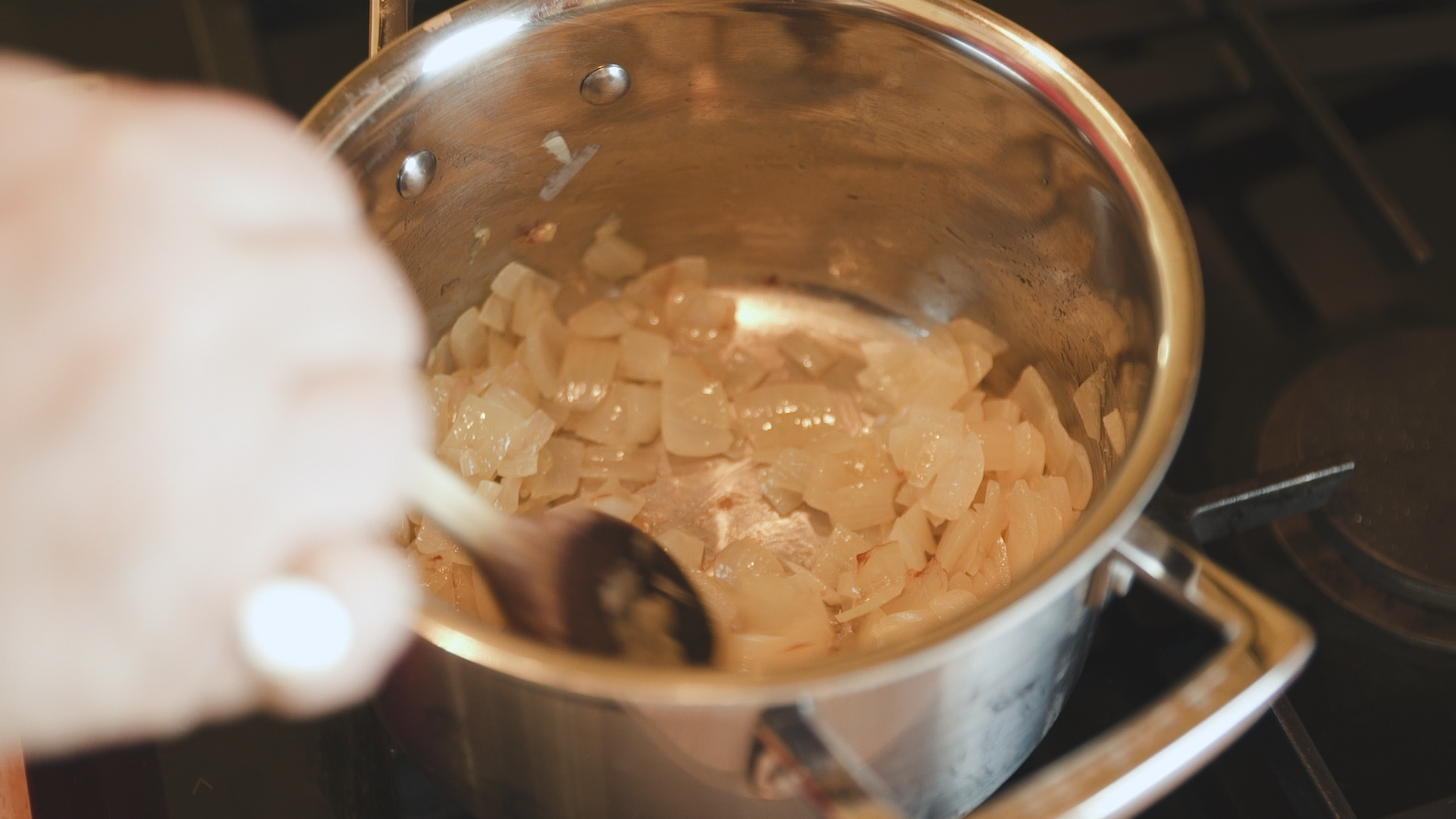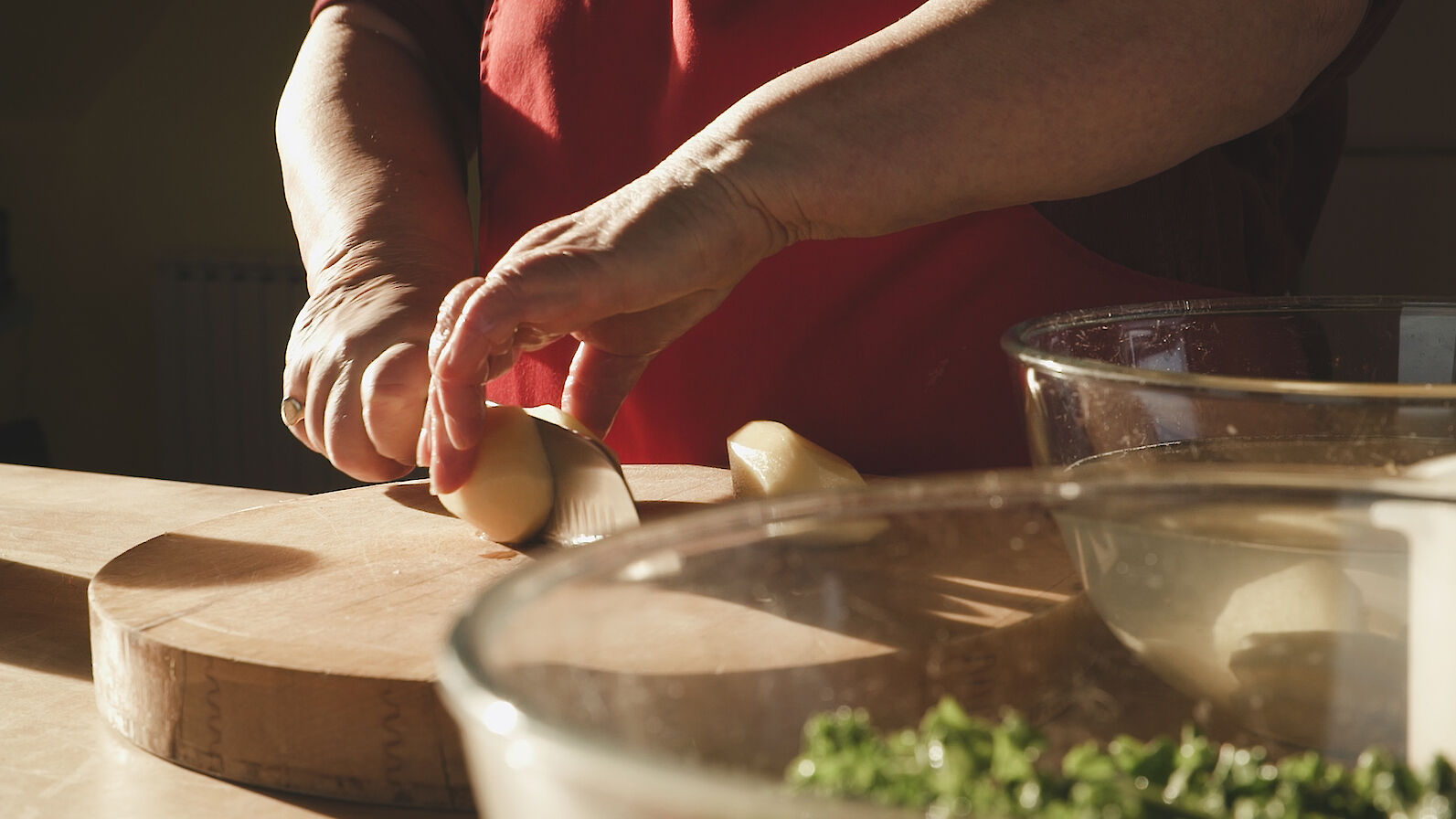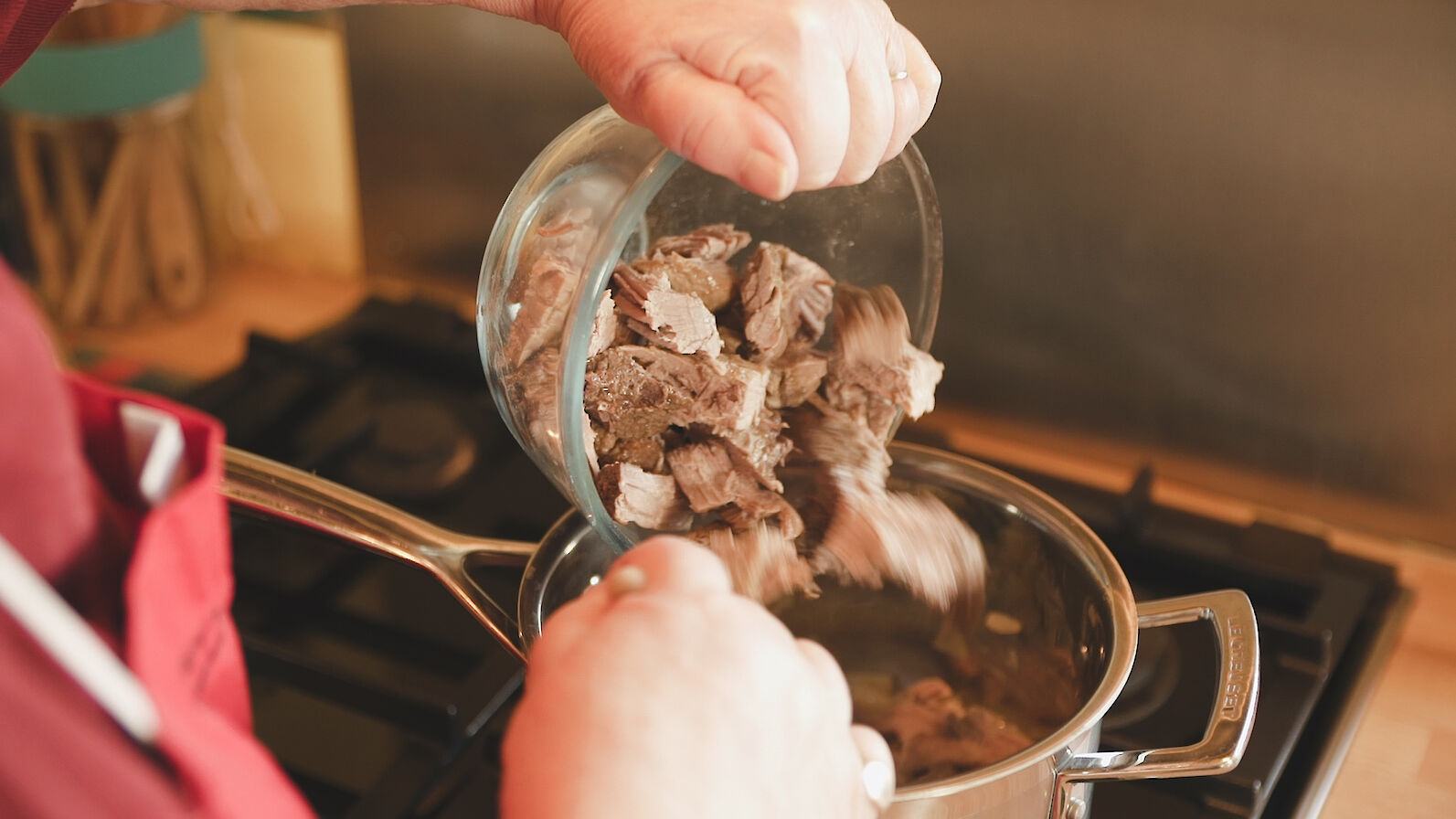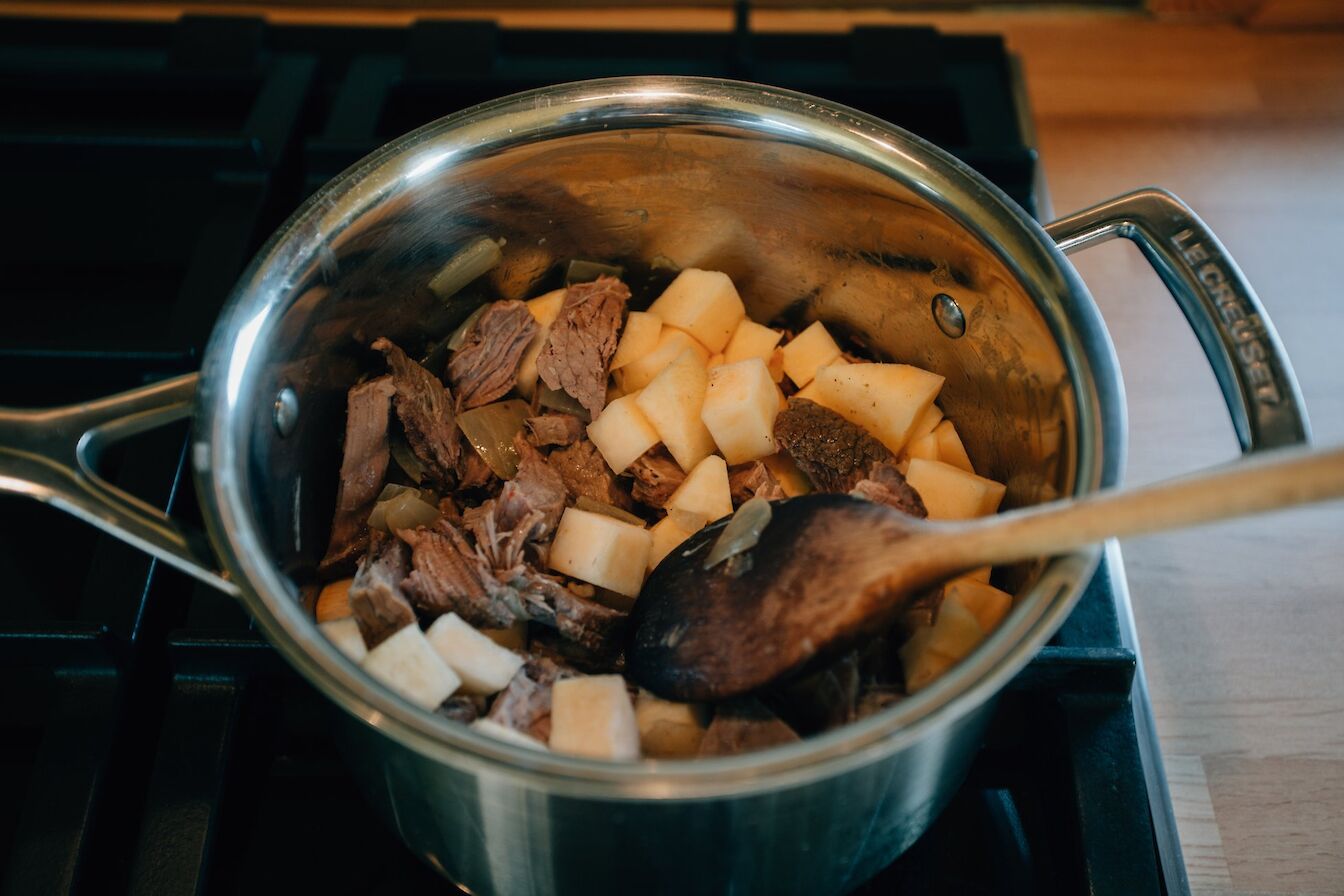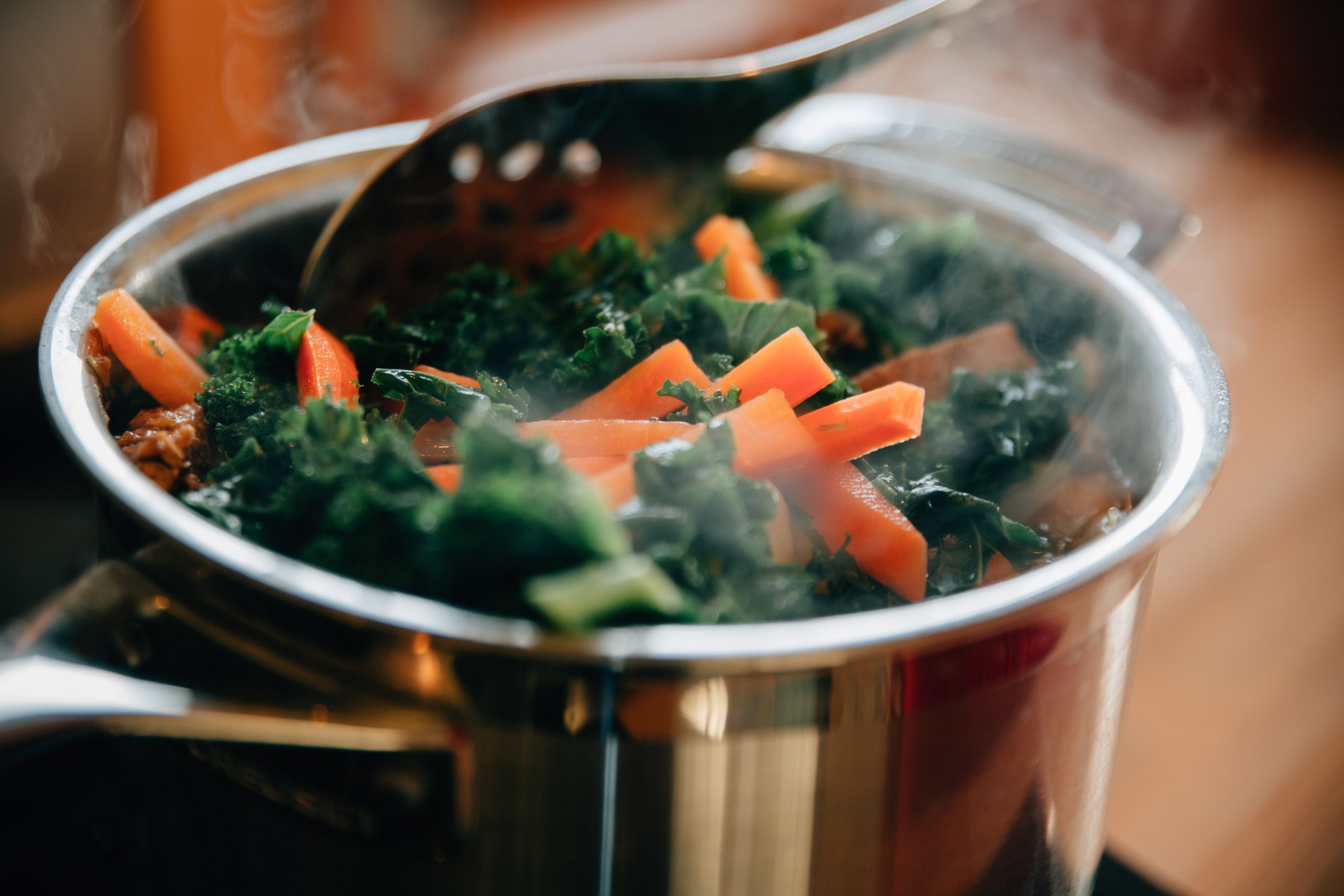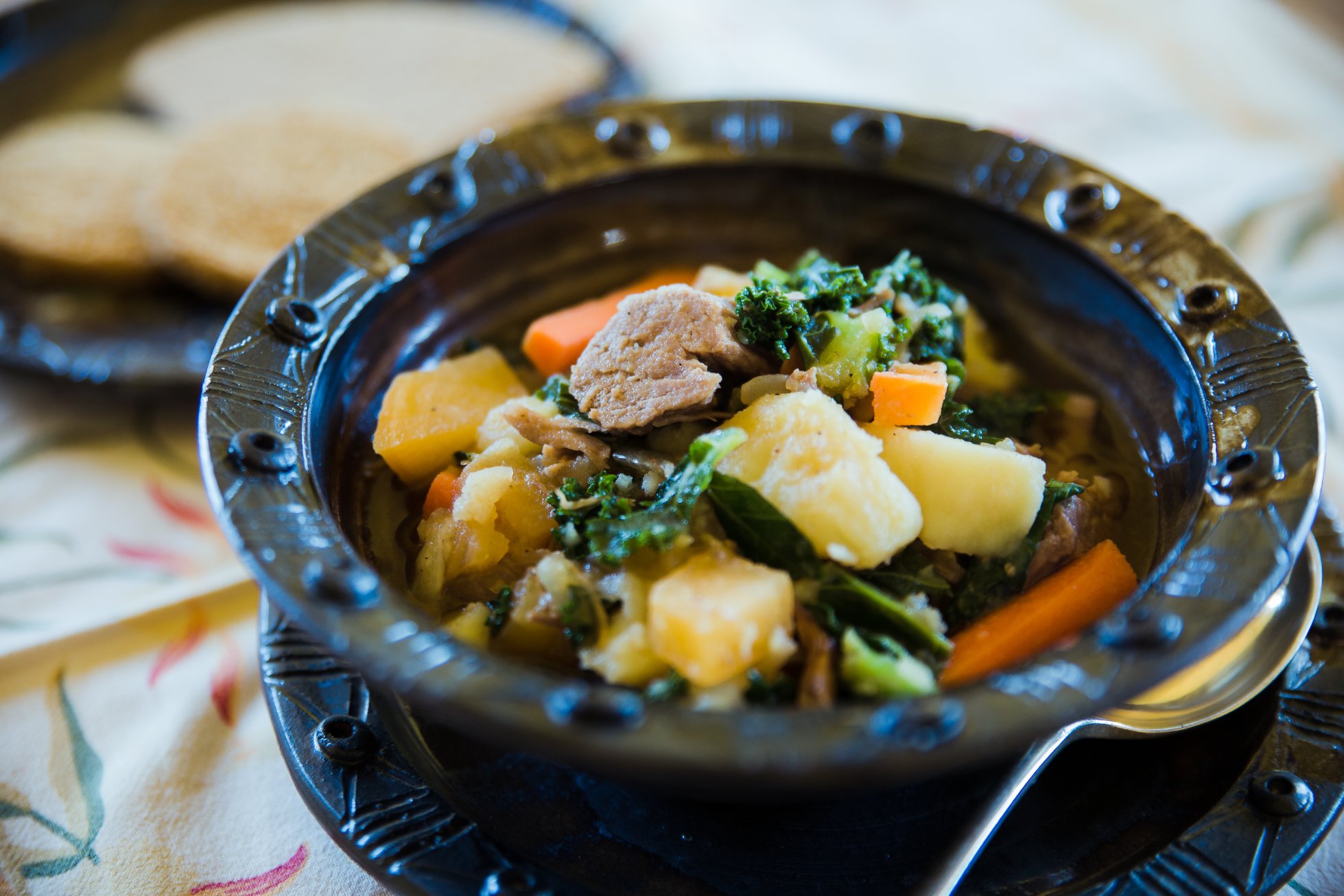Our regular food blogger Rosemary Moon is showcasing her take on a classic Scottish dish this month, featuring plenty of Orcadian ingredients. Keep reading to try her recipe for yourself.
When friends invited us for leftovers on Boxing Day, I had no idea that they would be feeding us a dish that would cause such heated debate across the dining table with their own family, let alone throughout the Highlands and Northern Isles! It was our introduction to Stovies, a one-pot rib sticker of a dish traditionally made with left-over meat and freshly cooked vegetables that has warmed many a Scot during the dark days of winter.
‘You shouldn’t be serving it with pickled beetroot here in Orkney, Mum, that’s so Aberdeenshire!’
How knowing the young were, with the vegans amongst them having just as much to say about the dish as the meat-eaters. Chunky, mushy, dry or liquid: everyone has their favourite way of serving Stovies, and now I’m ready to share my version, celebrating Orkney's fabulous food and drink - a contemporary Orcadian Stovies.
Stovies is a classic combination of ingredients that have been cooked together for centuries where the staples of winter fare have been meat and root vegetables. That said, beef or lamb, tatties, neeps (swedes) onions and carrots all flourish in Orkney, where Stovies is traditionally served with oatcakes or a bere bannock, often crumbled over the dish.
The quality of the local meat on offer in the five traditional butchers that we are lucky to have on the mainland is testament to the husbandry of the local livestock farmers. It is in Flett’s in Stromness and Craigie’s at The Brig Larder and Williamson’s in Kirkwall, and at The Dounby Butcher that you will be able to talk cuts and choose your meat from traditional displays. Donaldson’s offer the convenience of pre-packed meat in their Kirkwall shop.
The most usual meat for Stovies is beef, although lamb could just as easily be used. Some like the dish to be a variation on mince and tatties and use mince for it, but I’m a chunkier sort of person and like the texture of left-over roast or braised meat.
When I first saw the size of the local neeps on sale in Orkney's food shops such as William Shearers and The Brig Larder, as well as the many local stores throughout the county that do such a brilliant job serving the rural communities, I thought they would be as woody as railway sleepers as they were so huge! Not a bit of it, and Baillie’s of Tankerness, the main veg grower in Orkney, is a master grower of both the neeps and the tatties that are key ingredients of Stovies. I spoke to Rognvald Baillie, a man as passionate about his mixed farm as I am about cooking, asking him about the best tatties for Stovies. At this time of year, it is the flavour-packed Setanta or Infinity, both of which are bred from the Rooster potato and do very well in Orkney. The secret of the amazing neeps is that the variety that Rognvald chooses for growing in Tankerness. They are much too large for supermarkets but do well in our cool climate and benefit - as so many brassicas do - from a frost to sweeten and deepen the flavour. No wonder Orcadian shops sell so much of Rognvald's produce.
I love loads of vegetables in my casseroles and decided that my Stovies needs both greens and crunch. My recipe uses leftover beef and the meat is the remains of Orkney beef brisket which was braised, along with tasty veg, in some of the deeply flavoured Voe ale from Swannay Brewery, a sweet hoppy oat stout. The best thing about using left-over meat for Stovies is having some of the gravy from a roast or the liquor from a braise in the dish for extra flavour. Keep your second meat dish in mind when cooking your first and ensure plenty of gravy for both. I cook the meat with the onions, neeps and tatties then add some batons of carrot and some shredded curly kale at the end for both texture and colour.
Many But and Ben Orcadian cottages had kale yards with walls to protect the greens from the worst of the winter storms and provide leafy veg throughout the darker months. Kale was a hero crop in Orkney long before it earned the current label of superfood for its high vitamin and mineral content and it is perfect to add to Stovies for a short cook as you stir at the end to break up the cooked potato and thicken the dish. Rognvald doesn’t currently grow kale but recommends using some shredded crinkly edged Savoy cabbage in its place.
The danger of tweaking a classic like Stovies is that a cook or chef can take a simple, every-day meal and start adding so many ingredients that it becomes quite removed from the dish that has been loved for generations. I add a tablespoon of capers at the end when I make the dish from lamb or mutton, and a splash of the bere Orkney Craft Vinegar for the beef version if I have no gravy. What I have learned about Stovies is that everyone has their own way of making it - some even make it with bacon pieces so why not try ham chunks? I think I had better stop now and share my recipe as the possibilities for Stovies really do seem endless!
Stovies - serves 4-5
This is a recipe that really needs no instructions and can be made with however much you have of whatever ingredients are in your fridge and larder, providing that you have some meat, tatties and neeps: any additional ingredients are up to you and so, as with all recipes, this is just a guide but it is how I made the dish that is in the picture. The essential thing up here is that as many of the ingredients as possible are Orcadian.
Ingredients
- 2 medium onions
- About half a neep (swede)
- 4-5 small baking-sized potatoes
- 1 large carrot
- 3-4 leaves curly kale or Savoy cabbage
- 1 tbsp oil or a knob of lard
- 500g cold cooked meat
- Gravy, stock or water
- Oatcakes or bere bannock to serve
Method
- Roughly chop the onions. Cut the neep into 5cm dice. Slice some of the potatoes and cut the others into chunkier pieces. Cut the carrot into 6mm batons and finely shred the cabbage or leaves after removing any thicker stalks. Pull or cut the meat into bite-sized pieces - I like it to look more rustic than evenly shaped, cut pieces.
- Cook the onions in the oil in a covered pan over a very low heat until translucent and soft (you could get them cooking while preparing the rest of the ingredients). Add the meat with some salt and pepper and stir well, then add the neeps and some of the tatties. Season lightly, stir to mix it all together then add the remaining tatties on the top. Add just a little more salt and pepper and sufficient gravy to almost cover the ingredients. Bring to the boil, cover and simmer for 15 minutes.
- Place the carrots and kale in a large bowl and cover with boiling water after the Stovies has been cooking for 15 minutes. Leave the pan cooking slowly while the veg sit in the hot water for 5 minutes. Drain the veg (keep the water for soup stock if you wish) then gradually stir the softened veg into the pan. As you stir the cooked tatties will start to break up and thicken the Stovies.
- Continue cooking, uncovered for a further 2-3 minutes. Stir again then turn off the heat, cover the pan and leave for 5 minutes. This will allow the additional veg to cook through but retain some bite, and the Stovies will thicken more.
- Check the seasoning then serve in bowls, with the oatcakes on the side or crumbled over, or with a bannock.
 Rosemary Moon ‘retired’ to Orkney after a long association with the salmon industry in the islands. The author of 19 cookery books and countless more recipes, including writing for Waitrose and Lakeland, she has brought journalists and food writers to Orkney in the past to show off our diverse and delicious food and drink. After several holidays here Rosemary and her husband Nick have settled in South Ronaldsay but, once a cookery writer always a cookery writer, Rosemary is finding it impossible to stop jotting down the new recipes that she is creating with the island produce.
Rosemary Moon ‘retired’ to Orkney after a long association with the salmon industry in the islands. The author of 19 cookery books and countless more recipes, including writing for Waitrose and Lakeland, she has brought journalists and food writers to Orkney in the past to show off our diverse and delicious food and drink. After several holidays here Rosemary and her husband Nick have settled in South Ronaldsay but, once a cookery writer always a cookery writer, Rosemary is finding it impossible to stop jotting down the new recipes that she is creating with the island produce.
Rosemary also writes and vlogs about whisky and is particularly interested in whisky and food matching. You can follow her on Twitter, Instagram and on her rosemarymoon.com and myorkneylarder.com websites.
The Digital Orkney project has been part financed by the Scottish Government and the European Community Orkney LEADER 2014-2020 Programme.
